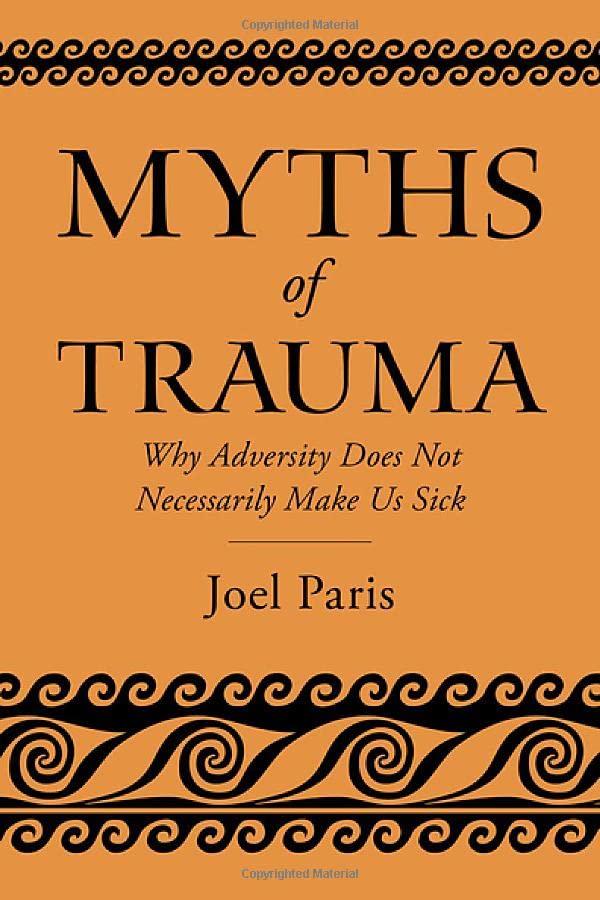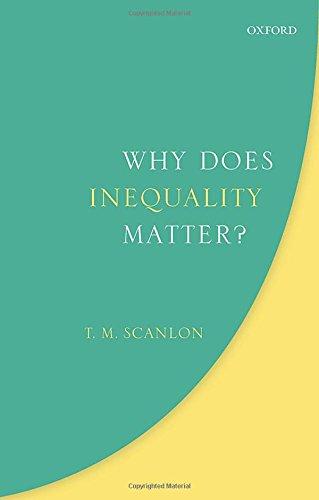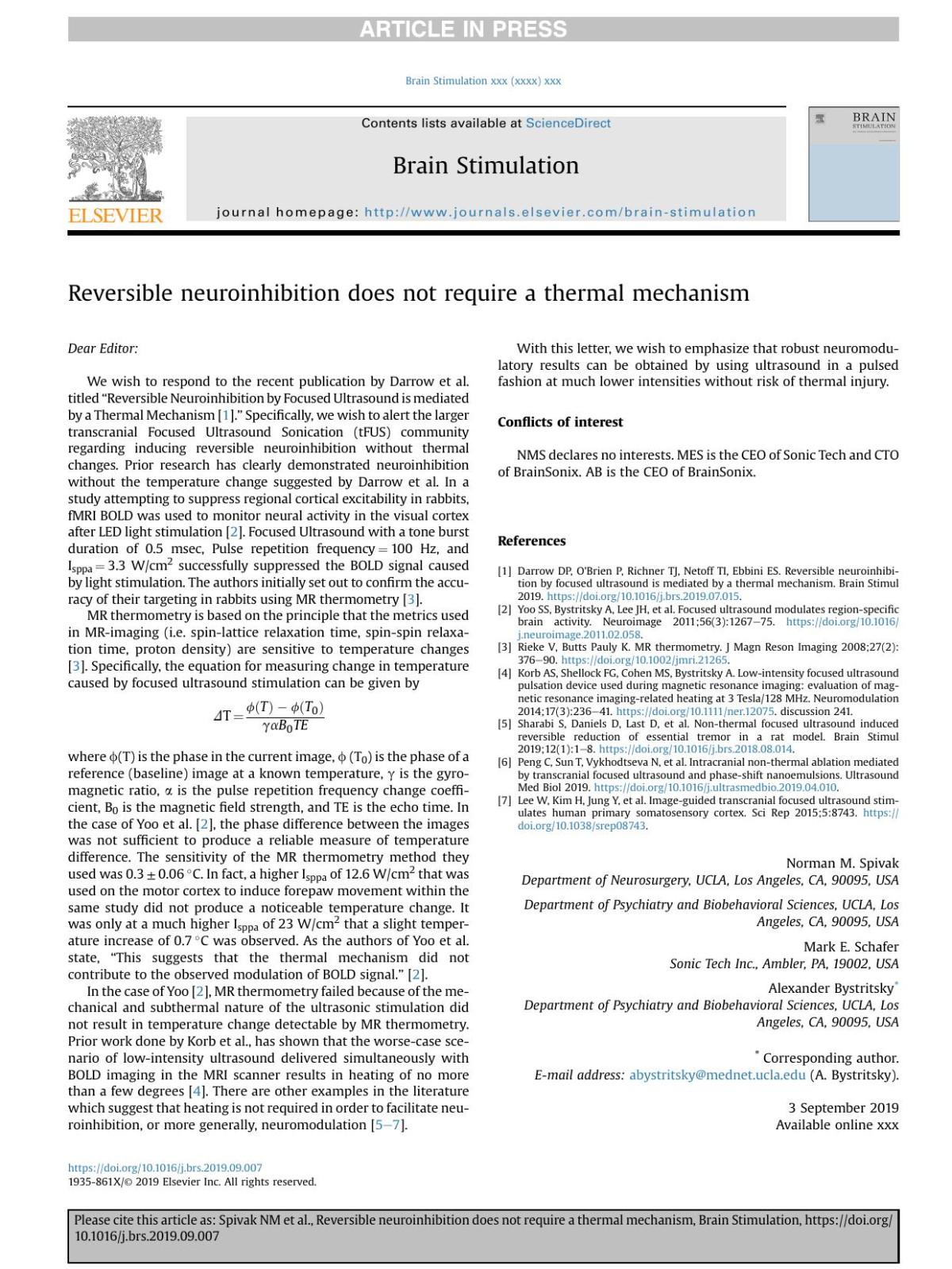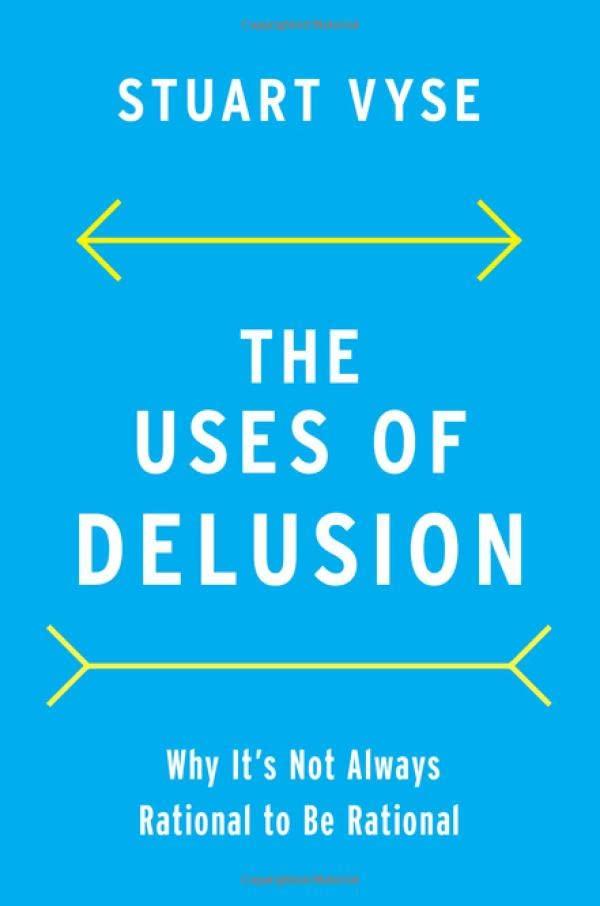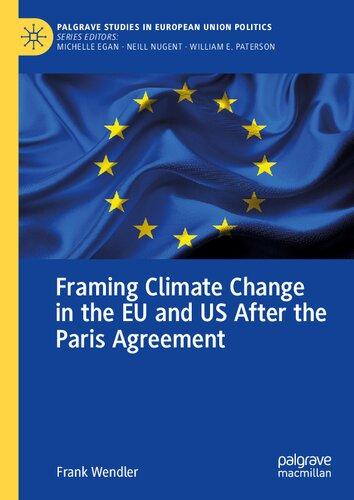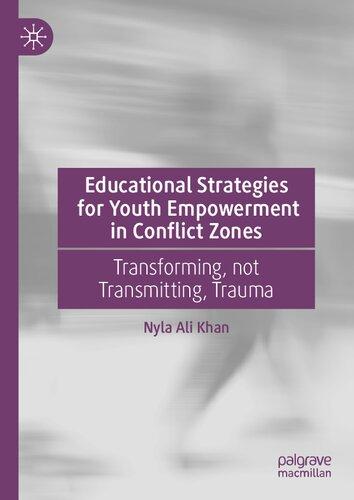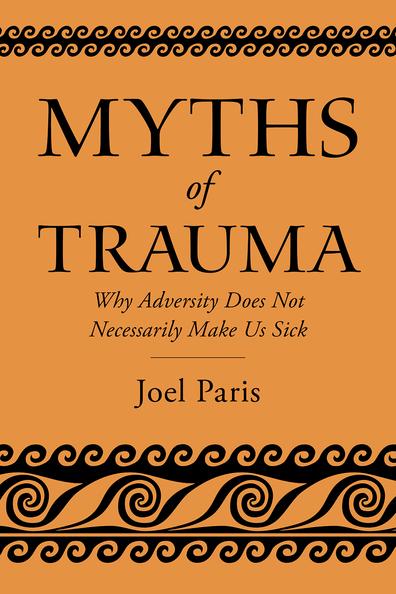MYTHS OF TRAUMA
Why Adversity Does Not Necessarily Make Us Sick
Joel Paris
PROFESSOR EMERITUS OF PSYCHIATRY, MCGILL UNIVERSITY
Oxford University Press is a department of the University of Oxford. It furthers the University’s objective of excellence in research, scholarship, and education by publishing worldwide. Oxford is a registered trade mark of Oxford University Press in the UK and certain other countries.
Published in the United States of America by Oxford University Press 198 Madison Avenue, New York, NY 10016, United States of America.
© Oxford University Press 2023
All rights reserved. No part of this publication may be reproduced, stored in a retrieval system, or transmited, in any form or by any means, without the prior permission in writing of Oxford University Press, or as expressly permited by law, by license, or under terms agreed with the appropriate reproduction rights organization. Inquiries concerning reproduction outside the scope of the above should be sent to the Rights Department, Oxford University Press, at the address above.
You must not circulate this work in any other form and you must impose this same condition on any acquirer.
Library of Congress Cataloging-in-Publication Data
Names: Paris, Joel, 1940– author.
Title: Myths of trauma : why adversity does not necessarily make us sick / Joel Paris.
Description: New York, NY : Oxford University Press, [2023] | Includes bibliographical references and index. | Identifers: LCCN 2022010908 (print) | LCCN 2022010909 (ebook) | ISBN 9780197615768 (paperback) | ISBN 9780197615782 (epub) | ISBN 9780197615799 (online)
Subjects: MESH: Diagnostic and statistical manual of mental disorders. 5th ed. | Psychological Trauma | Stress Disorders, Post-Traumatic—etiology | Mental Disorders—diagnosis | Risk Assessment | Resilience, Psychological Classifcation: LCC RC552 T7 (print) | LCC RC552 T7 (ebook) | NLM WM 172.5 | DDC 616.85/21—dc23/eng/20220323 LC record available at htps://lccn.loc.gov/2022010908 LC ebook record available at htps://lccn.loc.gov/2022010909
DOI: 10.1093/med/9780197615768.001.0001
Tis material is not intended to be, and should not be considered, a substitute for medical or other professional advice. Treatment for the conditions described in this material is highly dependent on the individual circumstances. And, while this material is designed to ofer accurate information with respect to the subject mater covered and to be current as of the time it was writen, research and knowledge about medical and health issues is constantly evolving and dose schedules for medications are being revised continually, with new side efects recognized and accounted for regularly. Readers must therefore always check the product information and clinical procedures with the most up-to-date published product information and data sheets provided by the manufacturers and the most recent codes of conduct and safety regulation. Te publisher and the authors make no representations or warranties to readers, express or implied, as to the accuracy or completeness of this material. Without limiting the foregoing, the publisher and the authors make no representations or warranties as to the accuracy or efcacy of the drug dosages mentioned in the material. Te authors and the publisher do not accept, and expressly disclaim, any responsibility for any liability, loss, or risk that may be claimed or incurred as a consequence of the use and/or application of any of the contents of this material. 1 3 5 7 9 8 6 4 2 Printed by Marquis, Canada
FOREWORD
Te recognition of postraumatic stress disorder (PTSD) in the third edition of the American Psychiatric Association’s Diagnostic and Statistical Manual of Mental Disorders (DSM-III) launched “traumatology”—a feld comprising mental health professionals who study and treat survivors of traumatic stress. During the development of the DSM-III, Vietnam veterans and antiwar psychiatrists lobbied for the inclusion of Post-Vietnam Syndrome, noting that no extant diagnosis captured the delayed emergence of chronic signs and symptoms caused by the war. Although the DSM-III commitee rejected a syndrome tied to a historical event, it approved the new diagnosis of PTSD afer clinicians treating victims of rape, natural disasters, and the Holocaust emphasized that their patients experienced the same symptoms as those sufered by troubled Vietnam veterans. Te ratifcation of PTSD in 1980 triggered an immense amount of research that continues to this day. Indeed, a recent bibliometric study indicated that the rate of publications on PTSD has greatly accelerated in the 21st century whereas the publication
rates of other syndromes (e.g., panic disorder, social anxiety disorder) have remained stable.
PTSD mobilizes moral passions far more than other syndromes do. If someone develops bipolar disorder, there is no one at fault. But when a trauma victim develops PTSD, there is usually a perpetrator to blame. Tis can render otherwise ordinary scientifc controversies especially explosive. For example, people skeptical of claims about hypnotically recovered “memories” of repressed memories of childhood sexual abuse have sometimes been accused of silencing the voices of survivors or having allied themselves with the perpetrators of sexual trauma. Traumatology has had no shortage of such controversies.
Joel Paris’s latest book, Myths of Trauma, is a splendid introduction to these controversies. As a practicing psychiatrist specializing in the treatment of borderline personality disorder as well as a distinguished contributor to the scientifc literature on personality psychopathology, he is ideally poised to dispel common misunderstandings—“myths”—about trauma and its consequences. Paris confrms that trauma is a common antecedent of other syndromes in addition to PTSD. He shows how its pathogenic impact is forever subject to the moderating infuences of personality, temperament, and social context. Te dramatic salience of serious stressors can sometimes eclipse other variables that amplify or atenuate the likelihood of survivors developing psychopathology or remaining resilient. Although many people experience acute symptoms in the immediate wake of trauma, most recover. PTSD is chiefy a failure of recovery.
Paris dispels confusions concerning dissociative identity disorder (multiple personality disorder), borderline personality, repressed (or dissociated) memories of trauma, premature enthusiasm for novel treatments for trauma survivors that lack empirical
support, and the broadening of the concept of trauma far beyond its original boundaries. In addition to drawing on research from psychiatry and clinical psychology, he discusses key fndings in epidemiology, history, genetics, cognitive psychology, and neuroscience. In summary, Paris is a superb writer with an uncanny skill of writing about complex topics concisely and clearly. Myths of Trauma is the ideal source, especially for busy clinicians, for geting clear about the vicissitudes of trauma and its consequences.
Richard J. McNally, Ph.D.
Harvard University
Cambridge, Massachusets July 2022
INTRODUCTION
w H At t HI s B o o K I s AB o U t
Trauma is a term that describes damage to the mind caused by a distressing life event. Traumatic events, in and of themselves, are most certainly not a myth. Some events, such as shootings or rapes, are particularly likely to provoke postraumatic symptoms. We need not lose sight of the fact that highly adverse life events can trigger serious psychopathology.
Even so, human life is full of adversity. Tis book will focus on the question of why some people fall ill while others show resilience in the face of adversity. Te reason for the title of this book is that a mythology of trauma has been sometimes seen as implying that pathological responses are predictable from exposure alone. Te large body of research reviewed in this book will show that they are not.
Moreover, most people will be exposed to traumatic events of some kind at several points in their lives. Some will go on to sufer
from postraumatic stress disorder (PTSD), a serious and potentially disabling mental disorder. Tis is one of the few categories of mental illness in which etiology is a criterion for making a diagnosis. Yet only about one in 10 of those exposed to most forms of trauma develop PTSD. Tis observation has been consistently confrmed in the scientifc literature (Bromet et al., 2018). Research shows that trauma, while it is a trigger for PTSD symptoms, does not, by itself, cause the disorder. Tus, triggering events are a necessary but not a sufcient condition for this form of psychopathology. Tis book will atempt to explain why, and to draw some implications for clinical practice.
Te idea that PTSD is almost entirely the result of exposure to adverse life events is problematic in another way. It leads to wellmeaning treatment methods that are sympathetic to those who sufer adversity but seriously oversimplify the complex pathways to symptoms. Tis is particularly the case for childhood trauma. Te evidence shows that trauma is a nonspecifc risk factor for a large range of psychopathology, in which traumatic histories are usually associated with more severe outcomes. Yet trauma, by itself, is not a strong predictor of the large family of disorders that are associated with adverse life events.
Tus, while traumatic life events are well-established risks for many mental disorders, they do not, by themselves, cause PTSD. Instead, like most mental disorders, PTSD is the result of interactions between biological, psychological, and social risk factors. Tus, like most other mental disorders, PTSD has biopsychosocial origins. Te complexity of these interactive pathways helps to explain why most people are resilient to life adversities of all kinds.
Te key fnding comes from research around the globe: Most people experience signifcant traumatic events in the course of a lifetime. Te lifetime prevalence of these adversities is at least
75% (Breslau et al., 1998). Precise fgures depend on what kind of experiences can be considered as being traumatic. And given the vagaries of human memory, the frequency of exposure is likely to be even higher. Tose who have never known trauma are a lucky few. Yet the majority, who have been exposed but have not sufered serious consequences, can put adversity behind them and move on with their lives.
Te point here is the large discrepancy between the frequency of exposure and the prevalence of PTSD. Ninety percent of people exposed to trauma will not develop the disorder (Sareen, 2014), which, once again, means that the proportion of those exposed who go on to develop PTSD is generally about 10%. Te frequency can go as high as 20% in high-r isk populations (Bromet et al., 2018), but that still leaves a large majority who never develop PTSD. It follows that other risk factors, and not trauma alone, need to be considered to explain how life events lead to symptoms. It also follows that treatment methods that focus exclusively on the processing of traumatic experiences fail to take these important coexisting risk factors into account, and such interventions may therefore be less efective.
Given the huge clinical and public profle of PTSD, it is important to acknowledge that while trauma is a scientifc issue, it is also a highly emotional one. Most of us strongly sympathize with victims. Tat is why I need to clarify that I am not arguing that traumatic events are unimportant, or that they have no efect on the risk for symptoms. Of course they do. What I am saying is that in order to understand trauma, we need to think about cause and efect in a complex and multivariate context. Tus, trauma is a nonspecifc factor that interacts with many other risks and can be best understood within a biopsychosocial model. We need to consider PTSD,
like other mental disorders, as the outcome of interactions among biological, psychosocial, and social risk factors.
w H Y I HAV e wr I tten t HI s B o o K
I am not a researcher on PTSD. My career has focused on personality disorders, particularly borderline personality disorder (BPD). But there are major theories about BPD that focus on the role of childhood trauma, and some have thought of the disorder as a variant of PTSD. My clinical experience in this domain, and my reading of the scientifc literature, have led me reject that conclusion, and to adopt multivariate models of BPD that focus on gene–environment interactions (Paris, 2020a, 2020d).
Research on the causes of BPD has long been afected by simplistic theories that atribute complex problems in mood regulation, identity, impulsivity, and interpersonal relationships to childhood trauma, without considering a broader range of biological, psychosocial, or social factors. Tis trend toward a “trauma focus” in therapy and a redefnition of BPD as “complex PTSD” are problematic and can have a negative efect on practice. Tese troubling developments have led me to review a broader literature on the efects of traumatic events and on what else (besides exposure) causes PTSD.
I have also writen this book because of my concern that clinicians treating patients with PTSD or related symptoms fail to take into account the complexity of postraumatic outcomes. If adverse events can be found in a patient’s history, therapists may be tempted to atribute problems of all kinds to the efects of exposure. Tis rush to judgment vastly oversimplifes the complex pathways to disorder, and it constitutes one of the main myths of trauma.
Since the word “myth” is in the title of this book, let me explain what I mean by it. Over 20 years ago, I wrote a book entitled Myths of Childhood (Paris, 2000a). In that volume, I used this word to describe ideas about putative causes of mental disorders originating in childhood that are commonly held by clinicians (and by the general public) but that are not supported by scientifc evidence. One of these myths is that traumatic events, particularly when they occur early in life, afect everyone in much the same way and are a major cause and predictor of adult psychopathology. Tis book will show that the pathological outcomes are not solely predicted by exposure to trauma but are afected by traits internal to individuals that are associated with a vulnerability to mental disorders.
Tese issues have profound implications for clinical work. Because I treat people with BPD, I actively practice psychotherapy and have spent many decades treating patients with histories of childhood trauma. I always work with patients to make sense of these experiences. But my research on the causes of BPD, including studies of the role of child abuse and family dysfunction, has led me to approach this problem from a diferent perspective, leading me to draw diferent conclusions.
For example, our research group (Laporte et al., 2012) recruited 56 women with BPD along with their sisters. Although these siblings grew up in the same family, and described many of the same adverse experiences, only three pairs were concordant for BPD, while 53 were not. Te key point was that the sisters difered greatly in personality trait profles, supporting the view that vulnerability to trauma, based on both genetic and nontraumatic environmental factors, plays a major role in the risk for BPD.
As important as it is, childhood adversity need not be the main or only subject of discussion in the psychotherapy of BPD. Nor should a personality disorder, which has broad efects on emotion
regulation and impulsivity, be reclassifed as a form of PTSD. Instead, the impact of life events needs to be understood in the context of two larger issues. Te frst is that trauma has a stronger pathogenic efect on those whose personality traits make them more vulnerable. Te other is that traumatic events in childhood are associated with broader problems of family dysfunction and emotional neglect that are themselves a major source of vulnerability, denying children the support they need to rise above adversity.
Tis book will recommend a similar approach to understanding PTSD in adults. Again, what needs to be explained is why only a minority of those exposed to highly adverse events develop postraumatic symptoms. I will review evidence showing that the impact of traumatic events on individuals is greatly amplifed by temperamental vulnerability, by a past history of trauma, and by weak social supports.
In summary, while trauma is an important risk factor for many forms of psychopathology, it is not, by itself, consistently predictive of any mental disorder. Adverse life events must be acknowledged and explored but need not be the main focus of psychological treatment. Tis book will suggest a diferent way of addressing these problems, one that takes personality and life course into account.
t H e roots o F res IL I en C e
Te capacity to not develop mental disorders afer trauma is called resilience (i.e., the ability to rise above adversity). Nietzsche no doubt exaggerated when he argued that what does not kill us makes us stronger. Yet positive outcomes, or what Ruter et al. (2012) call “steeling,” do occur. Tis increase in resilience afer trauma has also
been called postraumatic growth (Tedeschi et al., 2018). Yet most outcomes fall within a range between a lasting and strong reaction and a temporary and weak one. Tose who are most vulnerable to adversity become the patients clinicians see in therapy. Tey do not see the majority of people who have experienced traumatic events, because they do not sufer enough to present to clinics, and because many fnd a way to go on with their lives.
While it is important to assess the impact of traumatic events in light of their severity, we can frame them within a larger biopsychosocial context. Tis allows us to consider the crucial role of resilience in protecting people from psychopathology. Tis book will place emphasis on genetic variations and predispositions that infuence how people process life events (Plomin, 2018). In that light, I will also explore the concept of diferential susceptibility to the environment (Belsky & Pluess, 2009). As we will see, this is a similar construct to the personality trait of Neuroticism (Costa & Widiger, 2015). People who are more susceptible to their environment are much more likely to develop mental disorders, including PTSD (Bowman & Yehuda, 2004).
Put simply, diferential susceptibility means that some people are thin-skinned, while others are thick-skinned (with most falling somewhere in between). Tose who are less susceptible tend to have transitory symptoms or none at all. While those who are thinskinned tend to be more severely afected by adversity, this group, because of their higher sensitivity, are also more likely to beneft from a positive environment. Tat fnding places diferential susceptibility in an evolutionary context, and helps explain why these traits remain in the gene pool.
Let us consider some examples. Research consistently shows that trauma does not necessarily come out of the blue. For example, children who are sexually or physically abused have ofen received
insufcient love from their families; emotional neglect makes them more likely to be exposed to and susceptible to traumatic events (Johnson et al., 2000). Since coexisting psychological risk factors infuence response to adversity, we should view the overall risk of disorder in those who have been traumatized as refecting interactive pathways (Kraemer et al., 2001).
We see similar predisposing factors for adults who develop PTSD afer a traumatic event. Again, genetic vulnerability and personality profles, as well as histories of multiple stressors with cumulative efects, help explain why only one out of 10 people exposed to trauma ever develop PTSD. Tus, even when trauma is implicated in the etiology of a mental disorder, it rarely accounts for a larger proportion of the variance in outcome (Horwitz, 2018; McNally, 2003).
All these research fndings teach us to avoid thinking about trauma in isolation. Tey also show why we should avoid seeing trauma as one thing rather than many diferent things. Tese details can be described as the parameters of trauma. In childhood trauma, the main parameters include the nature of the event, the length of exposure, and the identity of perpetrators (Browne & Finkelhor, 1986). In adult trauma, the most important parameters concern whether adverse events involve interpersonal violence, rape, or threats to life (Sareen, 2014). Te more severe these parameters, the more likely it is that PTSD will be an outcome.
IMPLICAt I ons F or C LI n ICAL P r A C t IC e
Tis book aims to warn clinicians about the tendency to overdiagnose PTSD, or to explain too much about patients from traumatic events in their life history (Paris, 2020d). Tis error becomes more likely when clinicians see trauma as an all-powerful
force that has the capacity to override resilience. It can also lead to therapeutic interventions that explore the past rather than focus on present difculties, distracting clinicians and patients from the primary tasks of therapy.
What accounts for the tendency to give too much weight to traumatic events? Te frst problem is that clinicians and researchers who observe and measure adverse experiences usually do so in clinical populations. Drawing broad conclusions from patients in treatment biases observations in favor of negative consequences and oversimplifes the role of risk factors. To avoid this error, we should not rely entirely on clinical samples but rather should obtain data on trauma in community populations.
Te second problem is that research ofen measures life events with questionnaires or interviews that are cross-sectional and that depend on accurate recall of past events. Tat is why we need more longitudinal studies of people exposed to trauma. As this book will show, existing studies of this kind show that memories of these events can change over time, and that outcomes are not highly predictable.
Te third problem is that even when research is conducted in the community, it ofen fails to measure the psychosocial context of life events or the coexisting risk factors with which they are associated. Te result is that researchers end up taking insufcient account of diferences in susceptibility to the environment.
Te fourth problem derives from political and social forces that infuence our view of PTSD, creating a “culture of trauma” (Horwitz, 2018). In the heyday of psychoanalysis, many clinicians took it for granted that childhood trauma is a powerful risk factor for adult psychopathology. Tese ideas remain infuential and have spread to other academic disciplines (such as history and biography). While current theories of child development tend to focus
more on genetic risk, they are still incomplete, failing to examine the interactions between genes and environment that best predict the development of psychological symptoms (Ruter, 2006). Finally, political movements that aim to promote social justice may be infuenced by a wish to validate adverse life experiences.
Myths of trauma can be partly understood as a refection of an era in which virtuous thinking focuses on the sufering of all who have been badly treated and/or marginalized. Tis is not, of course, to say that mistreatment and marginalization are not painful—they usually are. And adverse life events do need to be explored in therapy. Te question is whether it makes scientifc sense to think of trauma as independent of other risk factors, or outside a larger context of adverse events that have, over the long term, cumulative efects. In this context, therapy need not be “trauma-focused” but should concern itself with life histories as a whole. In this way, treatment needs to give priority to the present and future, not just to the past.
Unfortunately, the efects of trauma are surrounded by myths that carry a strong emotional impact and that insert a measure of drama into the routine work of psychotherapy. Tus, a narrative tends to develop around trauma (Young, 1995). Te result can be a failure to beneft patients who seek help for current problems; instead, they are provided with well-meaning but misguided therapy. I will suggest alternatives using psychotherapies that are based on beter empirical evidence.
In summary, the main themes of the book can be summarized as follows:
1. Trauma has become a catchword for many kinds of adverse experiences; this is a construct that needs to be more narrowly and precisely defned.
2. Traumatic events have always been a part of human life, and most people are notably resilient to adversity.
3. Exposure to trauma is only one risk factor for PTSD, and not always the most important one. Te disorder can only be understood in a biopsychosocial model, taking into account genetic vulnerability, personality trait profles, previous adversities, and levels of social support.
4. Trauma has become a political issue that interferes with unbiased scientifc study of its efects.
5. Te concept of repressed and recovered memories of traumatic events is scientifcally invalid.
6. Te w ide comorbidity of PTSD, particularly when symptoms are chronic, means that it cannot be considered as a specifc category with a specifc treatment, and that treatment for patients should be broadly biopsychosocial.
7. Complex PTSD is a new but problematic diagnosis, and most of its features can be beter explained by personality disorders.
8. Several evidence-based methods of treatment for PTSD have been developed, but their efectiveness is no greater than that of standard cognitive-behavioral therapy.
9. Understanding experiences of trauma has a place in the treatment of PTSD, but excessive focus on processing memories can be a mistake.
10. A focus on trauma narratives can also work against the interests of patients by encouraging victimhood instead of a sense of competence and agency.
Tus, based on a large research literature, I will ofer a view of how contemporary theory and practice in mental health need to be broadened to determine the true efects of traumatic events in adult
life. Tis book will ofer a more complex and multidimensional view of PTSD than is currently held by clinicians, patients, or the educated public.
ACK now L ed G M en ts
Lise Laporte read an earlier version of this book and provided detailed and insightful feedback. Allan Young read several chapters of a draf and also ofered helpful comments.
Posttraumatic Stress Disorder?
P ro BL e M s I n de FI n I n G C r I ter I A F or P osttr A UMAt IC stress d I sorder
Postraumatic stress disorder (PTSD) was introduced into the standard diagnostic classifcation over 40 years ago, in the third edition of the Diagnostic and Statistical Manual of Mental Disorders (DSM-III; American Psychiatric Association, 1980). While there were some precedents for this construct, historical forces, particularly the Vietnam War and its afermath, were a major factor in its adoption.
PTSD, unlike most categories in the DSM system, is linked to a specifc etiology. Exposure to traumatic stress is, by defnition, a necessary condition for PTSD. But the manual fails to emphasize that exposure is not sufcient. Research repeatedly shows that only a subgroup of individuals exposed to the same adverse events will develop postraumatic symptoms (Bryant, 2019).
In DSM-5 (American Psychiatric Association, 2013), PTSD can be diagnosed if all of the following criteria are met:
Criterion A: Defnition of the stressor (exposure to death, threatened death, actual or threatened injury or sexual violence; through direct exposure, witnessing or learning of a trauma, or indirect exposure in course of professional duties)
Criterion B: Intrusion symptoms (at least one: upseting memories, nightmares, fashbacks, distress or physical reactivity afer exposure to reminders)
Criterion C: Avoidance symptoms (at least one: trauma-related thoughts or feelings, or external reminders)
Criterion D: Negative alterations in cognition and mood (at least two: problems with memory, negative thoughts, selfblame, negative mood, decreased interest in activities, isolation, loss of positive afect)
Criterion E: Alterations in arousal and reactivity (irritability, risky behavior, hypervigilance, startle reactions difculty concentrating, difculty sleeping)
Criterion F: Duration (at least 1 month)
Criterion G: Functional signifcance (distress or impairment)
Criterion H: Exclusion (not due to another disorder)
DSM-5 also lists two possible specifers for subgroups: (1) the presence of notable dissociative symptoms and (2) a delay in the onset of full symptoms.
This definition of PTSD has a long history behind it, and in some ways the construct has become broader over time. The most crucial issue has been a gradual expansion of Criterion A. DSM- 5 made an attempt to narrow it somewhat, but the problem remains.
In DSM-III (American Psychiatric Association, 1980) the defnition of a stressor was an event that “would evoke signifcant symptoms of distress in almost everyone” and that was “generally outside the range of usual human experience.” In the revised version (DSM-IIIR; American Psychiatric Association, 1987), the defnition required exposure to death, threatened death, or actual or threatened serious injury or violence. In DSM-IV (American Psychiatric Association, 1994), this criterion was broadened to include indirect exposure, such as witnessing a trauma, learning that a relative or close friend was exposed to a trauma, or working in a feld where trauma is common.
Te defnition of a stressor in DSM-5 (American Psychiatric Association, 2013) remains overly broad. As defned in Criterion A, it requires “exposure to actual or threatened death, serious injury, or sexual violence in one (or more) of the following ways: directly experiencing the traumatic event, witnessing, in person, the event as it occurred to others, learning that a violent or accidental event occurred to a close family member or close friend, or repeated exposure to aversive details of the traumatic event (e.g., frst responders collecting remains, or police ofcers investigating child abuse).” Te main narrowing of the criterion was that exposure due to watching a traumatic event on television no longer meets criteria for a stressor.
Tus, the defnition of a stressor in DSM’s Criterion A has changed in consecutive editions of the manual: It started with life-threatening events and gradually broadened out to include all sorts of adverse events, sometimes even including just hearing
about one. Tis expansion of what kinds of events can be called “traumatic” is a good example of concept creep (Haslam, 2016; McNally, 2016). In other words, one starts with a narrow defnition that gradually broadens. Concept creep is one of the main reasons for overdiagnosis of all kinds of disorders in psychiatry (Paris, 2020c).
Te defnition of PTSD on the International Classifcation of Diseases (ICD-11; World Health Organization, 2019) is more succinct and relatively more conservative:
Post-traumatic stress disorder (PTSD) is a disorder that may develop following exposure to an extremely threatening or horrifc event or series of events. It is characterized by all of the following: 1) re-ex periencing the traumatic event or events in the present in the form of vivid intrusive memories, fashbacks, or nightmares. Tese are typically accompanied by strong or overwhelming emotions, particularly fear or horror, and strong physical sensations; 2) avoidance of thoughts and memories of the event or events, or avoidance of activities, situations, or people reminiscent of the event or events; and 3) persistent perceptions of heightened current threat, for example as indicated by hypervigilance or an enhanced startle reaction to stimuli such as unexpected noises. Te symptoms persist for at least several weeks and cause signifcant impairment in personal, family, social, educational, occupational or other important areas of functioning.
Central to this defnition is the principle that a core component of PTSD is a reexperiencing of the memories of the traumatic event in the present. However, unlike DSM-5, ICD-11 avoids focusing on
symptoms that are not specifc to PTSD, and that could equally well lead to a mood or an anxiety disorder. Tis change refects the aim of making PTSD more specifc (Brewin et al., 2017) and reducing the frequency of the diagnosis (Cloitre et al., 2014).
Up to now, given that so much of the research on PTSD has come from North America, the DSM defnitions have predominated. Tus, as diferent cutof points have been used to determine “caseness,” concept creep has led to an overall broadening of what can be considered “traumatic” (North et al., 2009). In some community studies (e.g., Breslau et al., 1991), even events as common as divorce or job loss were considered to be triggers for PTSD. Tere is much less controversy about whether war, rape, violence, and other severe traumas should be viewed as stressors.
Tese diagnostic problems have made the precise prevalence of PTSD difcult to measure. Nonetheless, large-scale epidemiological studies have been conducted in the community to determine the prevalence of mental disorders commonly seen in clinical setings. Reports based on the Epidemiological Catchment Area survey in the 1980s for DSM-III–defned PTSD (Robins & Regier, 1991) yielded a lifetime prevalence of 1% for PTSD. However, using DSM-IV criteria, the National Comorbidity Survey (Kessler et al., 1995) reported a lifetime prevalence of 7.6%—a vast increase. Te National Comorbidity Survey Replication in the early 2000s (Kessler et al., 2005a, 2005b), also based on DSM-IV, found a similar rate: 6.8% (with 10.4% in women, but only 5% in men). Other large-scale surveys have reported rates of 8% to 9% (Breslau et al., 1991, 1998; Kilpatrick et al., 2013). Tese rates remain notably high but are lower than high lifetime rates of exposure to trauma. Tis trend can lead to an overdiagnosis of the disorder and an overuse of trauma-focused therapies.
